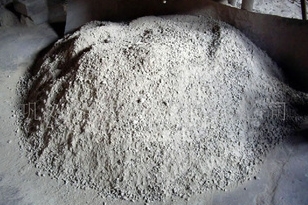- 22
- Dec
mayezi-alumina spinèl
Magnesia-alumina spinel (mayezi-alumina spinèl) refers to the artificially synthesized spinel refractory raw material using magnesium oxide and aluminum oxide as raw materials. The raw material is rarely found in nature, and the industrial magnesia-aluminum spinel is all artificially synthesized. Bauxite-based sintered magnesia-aluminum spinel is made of high-quality bauxite with an Al2O3 content of more than 76% and high-quality light-burned magnesia powder with a MgO content of more than 95%. Sintered at the above high temperature.
entwodiksyon
Se boksit ki baze sou sintered mayezi-aliminyòm spinèl te fè nan boksit-wo kalite ak yon kontni Al2O3 ki gen plis pase 76% ak-wo kalite limyè-boule mayezi poud ak yon kontni MgO ki gen plis pase 95%. SINTERING tanperati ki wo anwo a [1].
The characteristics of aluminum-magnesium spinel
Bauxite-based sintered magnesia-aluminum spinel is made of high-quality bauxite with an Al2O3 content of more than 76% and high-quality light-burned magnesia powder with a MgO content of more than 95%. It is sintered at high temperature, with high bulk density, high mineral phase content, well-developed crystal grains, uniform structure and stable quality. Magnesium-aluminum spinel has good corrosion resistance, strong corrosion and spalling ability, good slag resistance, abrasion resistance, thermal shock stability, high temperature resistance and other performance characteristics. It is an ideal raw material for the production of refractory products such as magnesia-aluminum spinel bricks for high-temperature zones of cement rotary kilns, ladle lining bricks, and ladle castables. Magnesium-aluminum spinel is widely used in refractory materials, steel smelting, cement rotary kilns and glass industrial kilns[2].
Application of Al-Mg Spinel
Li gen bon rezistans korozyon, rezistans abrasion ak bon estabilite chòk tèmik. Itilizasyon prensipal li yo: Premyèman, ranplase mayezi chrome sab pou fè brik spinèl mayezi-aliminyòm pou siman rotary kilns, ki pa sèlman evite polisyon chromium, men tou, gen bon rezistans eklatman; Dezyèmman, li se itilize pou fè louch castables, anpil amelyore rezistans a korozyon nan pawa a plak asye. Li se lajman ki itilize nan materyèl refractory pou asye. Pwodiksyon spinèl-wo kalite pre-sentetik bay nouvo matyè premyè pou pwodiksyon refractories ki pa gen fòm ak fòm pite-wo [2].
resolve resolution
There are two kinds of electric melting method and sintering method. The electrofusion synthesis method uses industrial alumina or high-purity bauxite and light-burned magnesia (containing natural or sea (brine) water-borne magnesium) in proportion, and is melted at a high temperature of about 2200 ℃ in an electric arc furnace. The sintering method is to use the above-mentioned raw material ratio, after grinding, mixing, balling, and calcining in a rotary kiln or shaft kiln at a high temperature above 1800℃. In some bricks, industrial alumina or high After the purity bauxite clinker is ground, it is added or jointly ground, mixed, and shaped according to the ingredients requirements, and then fired at a high temperature to produce magnesia-aluminum spinel bricks, which are mostly used in open-hearth furnace tops and other parts.

